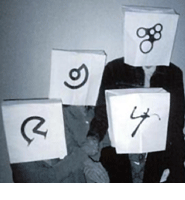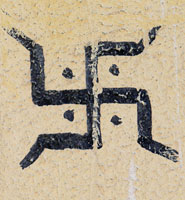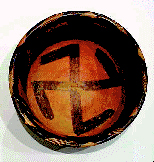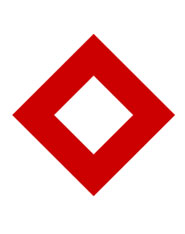| Symbols and Cultural Perceptions | |||
 |
 |
 |
 |
| Testing Cultural Perceptions If a symbol has no pictorial reference and is comprised of an arbitrary mark, its meaning must be learned. This can be problematic when cultural, age and national bias comes into play. But if the sign has not yet acquired any meaning could the form alone transmit a message? David Crow, in his text, Visible Signs: An introduction to Semiotics, writes about an experiment in which abstract marks made in the UK were shown to an audience in Austria.1 |
The Austrians were asked to assign each mark with one of four characteristics: Relaxing, Exciting, Fresh and Calm. In the results (click on above to see larger) the red indicates how many chose the expected answer. You can see that the Austrians agreed on Relaxing and Exciting but did not perceive Fresh and Calm in the same manner as the English. Designhistory.org tested these images in over 20 classes in the US, and the results paralleled expected results on all four counts. But in the US, all of the participants were of one ilk, graphic designers. Could this mean that graphic designers have a common sensibility? |
Swastika The swastika has taken on perhaps the most diverse meanings of any symbol. In Europe and the West it is a disturbing reminder of Adolph Hitler and the Nazis regime. The swastika, as a Nazi symbol, is banned in Germany but a proposal to extend the ban across the European Union in 2005 failed. Microsoft has banned it from all games. However in other cultures, including ancient China, native American and modern India, a version of the swastika signifies good luck and harmony. The photo above is a common decoration, here painted on a house celebrating a wedding day in Rajasthan, India. 2
|
Artist Gerd Arntz used the swastika to protest against Nazi Germany's political corruption. 3  Bowl from Banshan Culture Majiawan Village, China Neolithic Period (2165-1965 BCE) 4 |
| Cultural Mismatches | |||
 |
 |
|
 Mr. Yuk was developed for, and is distributed by, the Children's Hospital of Pittsburgh |
| Religious Issues A symbol that heals in one country may be painful in another. The Red Cross symbol (a reverse of the Swiss flag) was afforded protection under the Geneva convention of 1864. Its intention is to identify medical aid personnel. The cross symbol is restricted to a proportion comprised of squares but for non-Christians the cross symbolizes Christianity. Those that reject the cross symbol use their own version such as the Red Crescent or the Red Star of David. |
A proposal has been adopted that countries use a universal sign of the Red Crystal (above) when operating outside their borders, as in the example for Isreal below. 5 
|
Age and Context “Research indicates that the old skull and crossbones used in the past to identify poisons had little meaning for the children in the 20th century. Pirate symbols have been exploited in movies, cartoons, commercial products and amusement parks to denote happy, exciting things like pirates and adventure. In a university-conducted testing program, children at daycare centers were shown six symbols which were affixed to identical bottles of mouthwash often found in family homes. The symbols included a red stop sign, the skull and crossbones, and four others. |
At the beginning of the test, each child was told that he might find bottles like these at home and was asked to identify any bottle he might not like to play with. The symbol that proved to be least attractive to the children was Mr. Yuk. 6 Mr Yuk has a Facebook page! |
| Footnotes | |||
1 2 3
|
4 6 |
||
| Copyrights | |||
|
©Designhistory.org 2011 |
|
|



